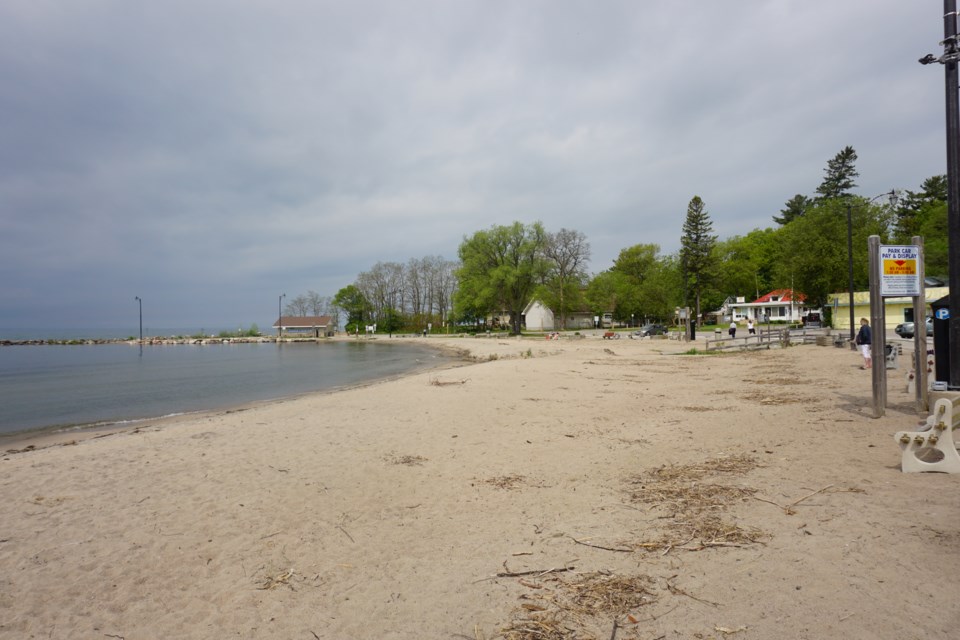Like many tourists who visit a beach on a hot summer day, members of Tiny Township council were buried up to their necks in a detailed report about dynamic shorelines in the municipality and how to deal with people building structures on them.
Stemming from a request last summer by the previous term of Tiny council to explore ways to manage shoreline alterations, staff were asked to look into the environmental impacts of Tiny’s beaches and approximate 70 kilometres of coastline along Georgian Bay.
At the recent committee of the whole meeting, over an hour of in-depth presentation and discussion on the anticipated 74-page report was had.
First up was professional engineer Judy Sullivan, president of Aqua Solutions 5 Inc. (AQS5), on the environmental constitution of beaches. She was followed by director of practice Karen Wianecki from Planning Solutions Inc. to discuss legality, planning, and policies in dealing with beaches on a municipal level.
In essence, Sullivan spoke about the natural cycle of dynamic beach movement for flooding and erosion as part of the ecosystem, noting that interferences with that cycle – such as building non-engineered shoreline structures – could negatively affect the balance to cause a beach to become unstable and without protection to its function.
The 100-year water level – a flood elevation of 178 metres above mean sea level – was also addressed as Sullivan described how a provincial policy statement regarded the dynamic beach hazard limit as having a 15-metre flood allowance for wave "uprush and overtopping," with an additional 30-metre dynamic beach allowance for natural movement of materials in and off shore; all as a minimum distance before stability could be considered.
“You don’t want to be putting hard structures within the system,” said Sullivan as a photograph of a Tiny Township property wall appeared in the slideshow labelled under existing development issues; she noted that engineered structures intentionally designed with dynamic shorelines in mind could be a consideration.
“It (water) can’t go and grab anything, there isn’t any material to grab – in this case it’s hitting a steel sheet pile wall so it can’t grab that material and take it offshore. So ultimately you’re not providing the natural protection that it would be if there was no structure there, but you do need to be set back.”
Members of Tiny committee of the whole had questions for Sullivan pertaining to structures built within township beaches, but Sullivan emphasized and cautioned that no blanket designation or definition could individually apply as each beach area would be needing unique treatment.
For the presentation by Wianecki, six questions asked by previous council were addressed in the report inquiring about authority to manage the shoreline, its liabilities, tools available, ways to implement management, recommendations, and a look at other municipalities dealing with similar issues. Legal opinions from Gardiner Roberts LLP were provided as contributors to the report.
Those answers were summarized that Tiny does have some control to manage activity through the Planning Act and other bylaws, including those in the Glaspell decision regarding obligations of regulation on Crown lands. Just as every dynamic beach is unique, there are no standard jurisdiction approaches at the municipal level that are used by every municipality. Liability is dependent on good or bad faith as approached through a risk matrix and assessment.
The presentation from Sullivan and Wianecki was received as information, with the report being approved by the committee of the whole for an option which would have staff follow recommendations to have AQS5 perform a costing summary for developing a two-phase dynamic beach management strategy. Phase 1 would review all bylaws and the official plan as it relates to dynamic beach hazards, while assessing Bill 23, More Homes Built Faster Act, 2022 implications. Phase 2 would look at developing the implementation of a risk assessment and risk matrix for legal implications.
The cost and timing for the strategy recommendation is to be presented to council at the May meeting.
The management of alterations to the shoreline report, as well as 48-page slideshow presentation and report summary, can be viewed within the agenda page located on the Tiny Township website.
Archives of council meetings are available to view on Tiny Township’s YouTube channel.



